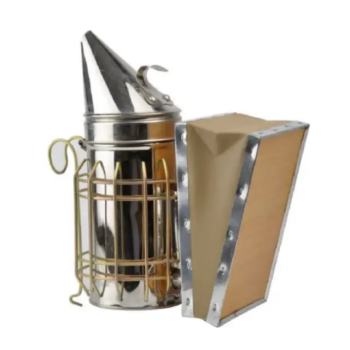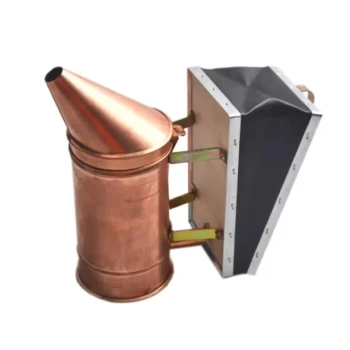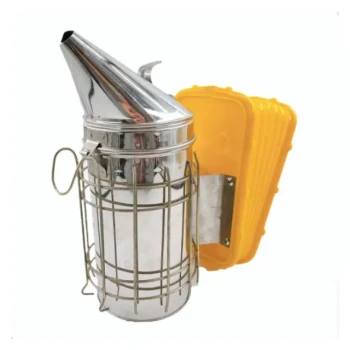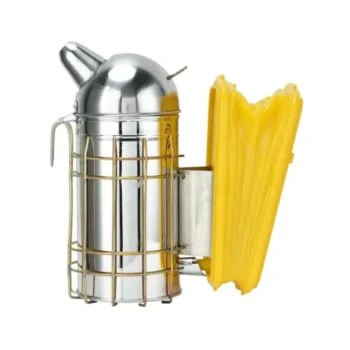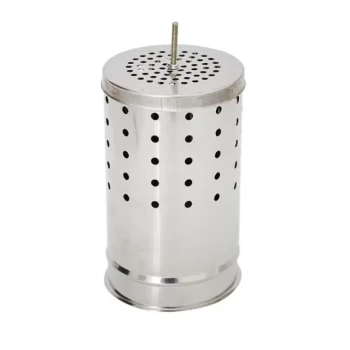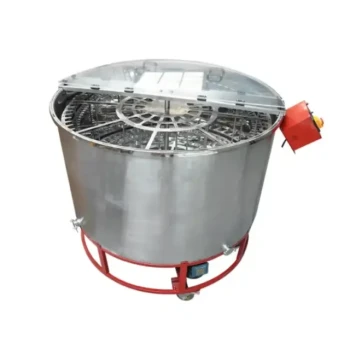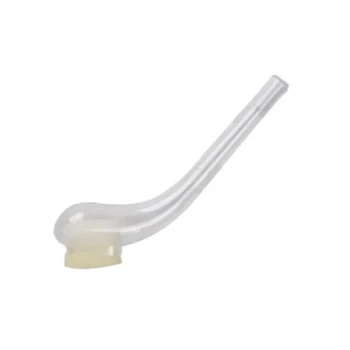A stubborn bee smoker is almost always a problem of fundamentals. If your smoker refuses to stay lit, the issue lies in one of three areas: your fuel is damp, your airflow is blocked, or you haven't built the fire correctly from the start. Success depends on using bone-dry fuel, starting with a fast-burning tinder, and ensuring consistent oxygen from the bellows.
The key to a reliable smoker is not just lighting it, but building it correctly in layers. A self-sustaining fire requires a fast-burning tinder base, a slower-burning kindling mid-layer, and a long-lasting main fuel on top, all supported by consistent airflow.

The Three Pillars of a Reliable Smoker Fire
A fire requires three elements to survive: fuel, oxygen, and heat. When your smoker fails, it's because one of these components is missing or insufficient. Understanding how they work together inside the smoker's chamber is the key to solving the problem permanently.
Pillar 1: The Right Fuel (It Must Be Dry)
The single most common reason a smoker fails is damp fuel. When fuel is wet, the fire wastes all its energy boiling off moisture instead of producing heat and smoke.
Your fuel should be layered. You need a tinder that lights easily, kindling that catches quickly from the tinder, and a main fuel that smolders for a long time.
Good tinder options include crumpled newspaper, cardboard egg cartons, or natural cotton fibers. For the main fuel, popular choices are dry pine needles, untreated burlap, wood shavings, or commercially available smoker pellets.
Pillar 2: The Right Airflow (Oxygen is Non-Negotiable)
The bellows on your smoker are not just for starting the fire; they are for managing it. Every puff injects a fresh supply of oxygen, which is essential for combustion.
A common mistake is packing the fuel into the smoker too tightly. This blocks air from flowing through the chamber from the bottom grate, effectively choking the fire no matter how much you pump the bellows.
The fuel should be placed in the smoker loosely at first, allowing air to circulate freely. You can add more fuel and pack it slightly more firmly once the fire is well established.
Pillar 3: The Right Structure (Layering for Longevity)
A successful smoker fire is built in stages, not just lit all at once. Each layer must be able to ignite the next.
Start by placing a loose ball of your chosen tinder at the bottom of the smoker. Light it and use the bellows to ensure it is burning well with a strong flame.
Next, add a handful of your kindling or a small amount of your main fuel (like pine needles). Pump the bellows until this layer catches fire and is burning strongly. Only then should you add your primary, long-lasting fuel on top.
Common Pitfalls to Avoid
Troubleshooting a smoker becomes simple once you recognize the common mistakes that undermine a good fire.
Mistake #1: Starting with Main Fuel
Dropping a match onto a pile of wood pellets or dense burlap will fail every time. These fuels require a significant amount of established heat to begin smoldering. Always start with a highly combustible tinder.
Mistake #2: Neglecting the Bellows
A smoker fire needs attention. If left sitting for too long without a fresh supply of oxygen, the embers will cool and the fire will go out. Give the bellows a few gentle puffs every 3-5 minutes to keep the coals alive.
Mistake #3: Using Treated Materials
Never use fuel that has been treated with chemicals, such as glossy paper ads, pressure-treated wood, or synthetic fabrics. Burning these materials can release toxic fumes that are harmful to you and your bees.
A Step-by-Step Guide to a Perfect Light
Use this checklist to build a consistent, long-lasting smoker fire for any hive inspection.
- If you need a fast, strong start: Focus on using a large, loose ball of tinder like crumpled newspaper, and give the bellows 5-10 strong puffs to establish a hot flame before adding anything else.
- If you need a long-lasting burn for multiple hives: Layer your fuel properly, starting with tinder, adding kindling like pine needles, and finishing with a denser fuel like burlap or wood pellets once the base is hot.
- If your smoker keeps going out mid-inspection: Remember to give the bellows a few gentle puffs every few minutes to keep the embers hot, and don't be afraid to add a small amount of fresh fuel on top if the smoke thins out.
Mastering your smoker transforms it from a source of frustration into your most reliable beekeeping tool.
Summary Table:
| Common Problem | Root Cause | Quick Solution |
|---|---|---|
| Fire dies immediately | Damp fuel or poor tinder | Use bone-dry tinder like newspaper; ensure fuel is stored dry. |
| Smoker won't stay lit | Blocked airflow or choked fire | Loosely pack fuel; pump bellows regularly for oxygen. |
| Smoke is thin or stops | Incorrect layering or neglected bellows | Build fire in layers (tinder, kindling, main fuel); puff bellows every 3-5 mins. |
Upgrade your beekeeping efficiency with professional-grade equipment from HONESTBEE. A reliable smoker is just the start. We supply commercial apiaries and distributors with durable, high-performance beekeeping supplies designed for heavy use. From smokers and hive tools to protective gear, our wholesale-focused operations ensure you get the quality equipment you need to manage your hives effectively. Let's discuss your apiary's needs — contact our team today for wholesale pricing and expert support.
Visual Guide

Related Products
- European Stainless Steel Bee Smoker for Honey Bee Hive
- Stainless Steel Honey Bee Smoker Hive and Honeycomb Smoker for Beekeeping
- Economy Galvanized Beekeeping Honey Bee Smoker for Wholesale
- Premium Traditional Copper Bee Smoker with Bellows
- Stainless Steel Electric Beehive Smoker for Beekeeping and Bee Keeper Use
People Also Ask
- What are the steps to operate a bee smoker? Master the Art of Gentle Beehive Management
- What are the advantages of a high-quality bee smoker? Achieve Calm, Confident Hive Management
- Can you use too much smoke on bees? The Right Way to Use a Bee Smoker for Calm Inspections
- How does a smoker help during hive inspections? The Key to Calm, Safe Beekeeping
- What are the key benefits of using a bee smoker? Master Hive Inspections Safely and Efficiently

